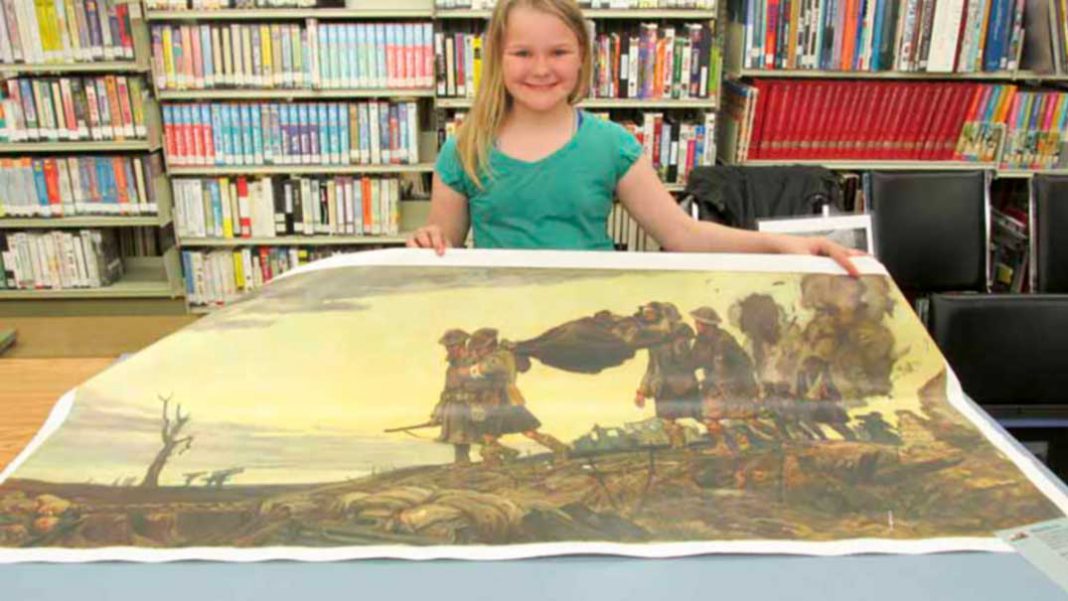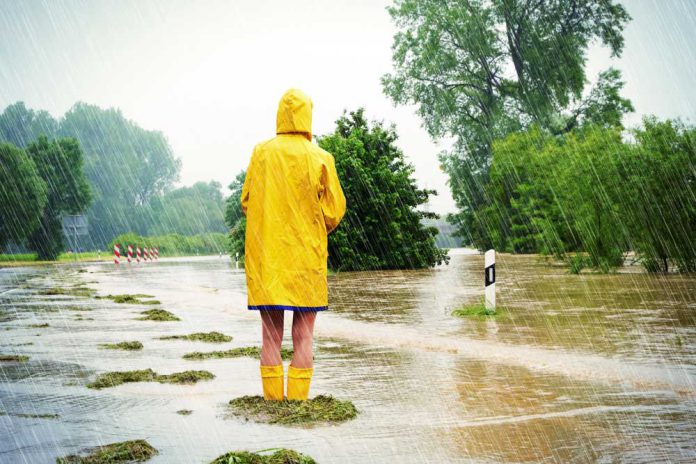GORE BAY—The Grade 4/5 students at Charles C. McLean public school have again this year demonstrated their expertise on World War I military artifacts.
The students hosted a World War I “Talking Museum” again this year in the school library on April 20. A ‘Discovery Box’ arrived from the Canadian War Museum and each student in the class endeavored to become an expert on an individual artifact, and had the chance to be a museum interpreter for the day.
“We call this program our World War I Talking Museum and our 4/5 class received a Discovery Box of World War I containing more than 20 artifacts from the Canadian War Museum in Ottawa,” said Grade 4/5 class teacher Heather Jefkins. “The majority of the items are historical reproductions while four items are actual World War I (100 year-old) artifacts.”
Ms. Jefkins explained, “each student becomes an expert in the artifact they are presenting on by carrying out research and filling out forms describing their artifact.”
The students practice relayed their knowledge on their WWI artifact to their classmates and then other classes in the school and members of the community had the opportunity to visit the school library to see and hear about the artifacts last Friday.
Going from table to table to view the artifacts, it was very evident every student had a really good grasp and knowledge about the WWI artifact they spoke on. Their knowledge was incredible and they were very enthusiastic about telling the story about these WWI items.
Definitely the noisiest artifact on hand was the gas alarm rattle—a hand operated noise maker used by Canadian and British soldiers to alert soldiers about chemical weapons and gas leaks and the need to don their gas masks.
There were posters from WWI, written in both English and French, that encouraged people to join the army; puttees, which are strips of wool cloth worn by Canadian soldiers and other members of the British Forces during WWI that were worn around a soldier’s leg from the ankle to the knee to help protect, support and strengthen the lower leg.
There was trench art and a variety of war-related materials that were decorated and kept as pieces of art. As well there were photographs, prisoner of war scrapbooks, soldier scrapbooks, soldier uniforms, aviation scarves used to keep pilots warm, nursing station aprons, original small arms ammunition in a shadow box and much, much more.
“The students teach the younger students and guests from the community about their artifact,” said Ms. Jefkins. “My Grade 5 students are in their second year of this program, so they have had the opportunity to become experts on two different artifacts. They are excited about telling the Grade 4 students about artifacts that they are learning about this year.”





